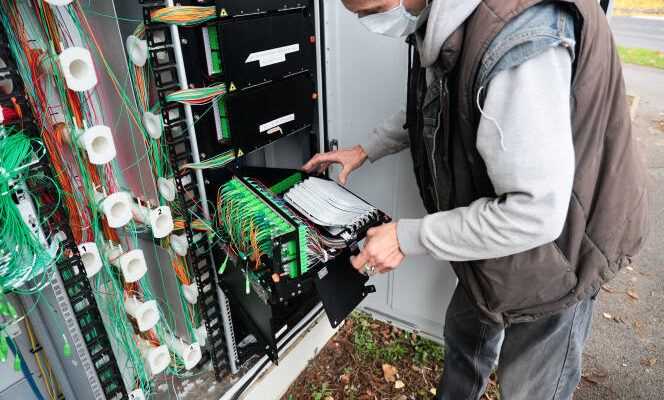When one evening in October, Philippe Mary realizes that his Wi-Fi no longer works, the 63-year-old computer scientist believes in a banal interruption and goes to bed peacefully. It is a thousand miles to imagine that a month and a half later he will still be deprived of a connection. When, the next day, his box remains out of service, his operator, Orange, sends a technician on site. This quickly identifies the origin of the failure: the fiber optic strand connecting the home of the Mary family to the network, in Chevreuse (Yvelines), was cut.
A technician intervened the day before until a late hour to open a fiber line to a neighbor, a Bouygues Telecom subscriber. Did he voluntarily disconnect the married couple’s line to connect his client? Was it the initial installation that was not correct? Still, six weeks later, nothing is fixed and no appointment has been made. Orange does make a 4G key available to Mary’s, but claims that it cannot do more: it is another player, TDF, which manages the deployment of the network in Chevreuse and must intervene.
The misadventures of the Mary family are not an isolated case. The Association of Cities and Communities for Electronic Communications and Audiovisual (Avicca) has tried to count the breakdowns, asking its members to list the incidents. “The first returns are disastrous”, says Patrick Chaize, senator Les Républicains de l’Ain and president of Avicca. So much so that the association has not published anything so as not to ” set on fire “. “There are degradations of installations, problems linked to poor interventions by technicians. But also hygiene concerns in buildings, for example in the presence of rats ”, details Valérie Alvarez, the mediator of electronic communications.
“Consumers can understand when to wait a day or two, but not when it’s repeated breakdowns”, believes Laure de La Raudière, president of theRegulatory Authority for Electronic Communications and Posts (Arcep), which is to publish, Thursday, November 25, a report on the quality of fiber in France. However, subscribers are lost in the midst of a myriad of interlocutors who pass the buck.
Jobs that should disappear
This is partly due to the organization of the deployment of fiber in France and its cascade of intervening companies. Everyone knows the so-called “commercial” operators such as Orange, SFR, Free or Bouygues Telecom, with whom we subscribe and who manage the opening of lines. Each has its own network, but apart from large cities, part of the infrastructure is common. In this case, another actor intervenes: the infrastructure operator. The role of Orange, XpFibre (subsidiary of Altice France, parent company of SFR), Axione (owned by the Bouygues group and the Mirova investment fund), TDF or even Altitude Infrastructure: linking the points of mutualisation – these large metal cabinets which have invaded the streets and basements of buildings and which are filled with hundreds of strands of fiber – to boxes located in the street or on the landing of a building, on which it is only necessary to connect the subscriber lines.
You have 65.22% of this article to read. The rest is for subscribers only.
